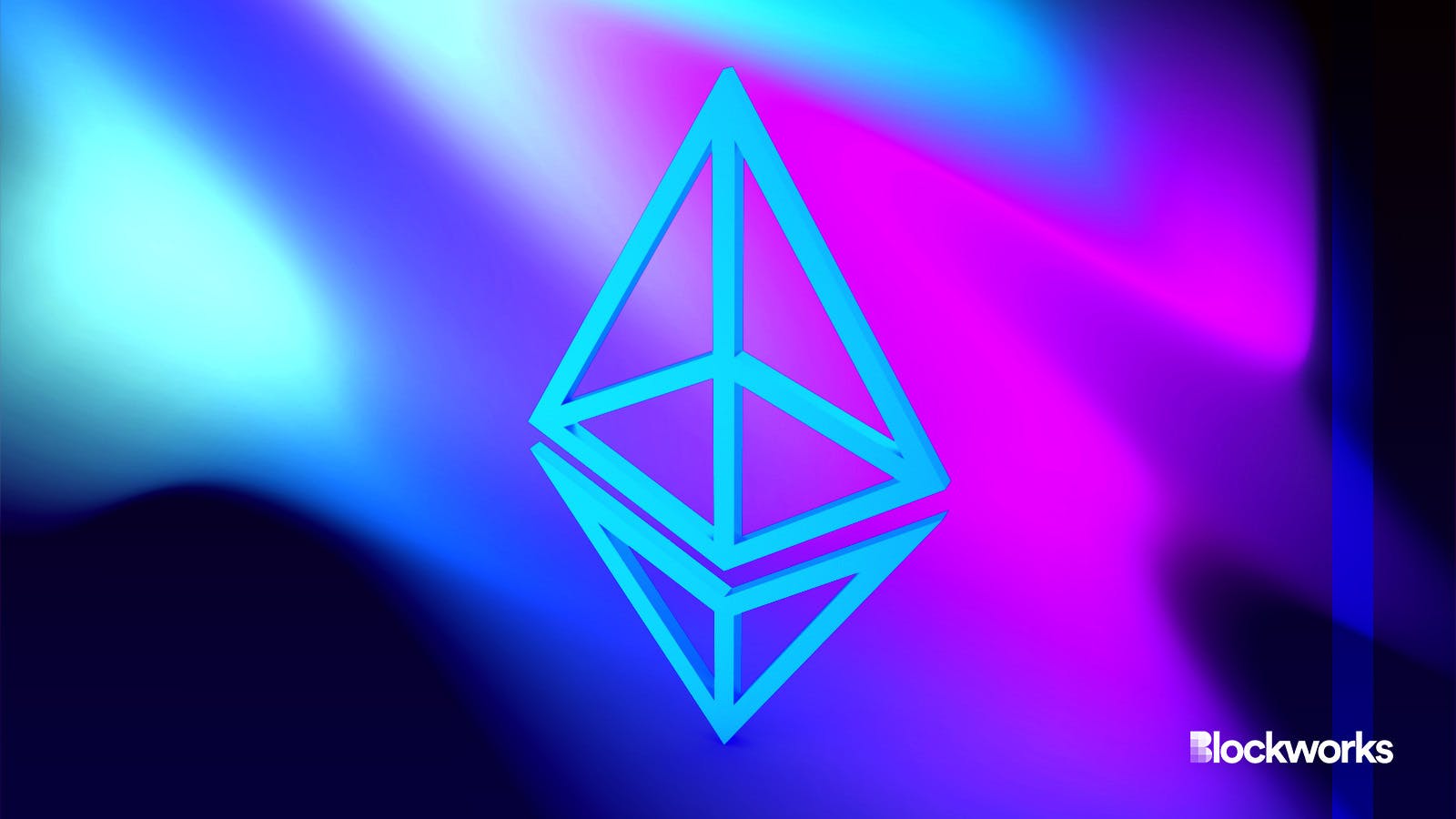It’s a Solanaissance: These 5 charts will cure the Ethereum vibecession
The rabblers on X are saying that Ethereum is doomed to be usurped by its younger, “monolithic” rival — these charts disagree

Adobe Stock and Shutterstock-Pixelsquid/Shutterstock modified by Blockworks
Ethereum is out and Solana is in.
Ethereum, its mess of layer-2s and neverending scaling roadmap are doomed to be usurped by its younger “monolithic” rival.
At least, that’s what the rabblers on X are saying.
The sagging ETH-to-BTC ratio surely isn’t helping. Bitcoin has swelled 160% this year, while ETH hasn’t even doubled. Anyone who sold their bitcoin for ether in January would’ve so far lost a quarter of their BTC on that trade.
Solana’s bitcoin ratio is up more than 300%. SOL’s dollar price is now 10 times what it was at the start of the year, although it’s still down almost two-thirds from its record high at the top of the last bull market.
Solana truthers would also point to the network’s cheap fees and engaged community, which have lately inspired a boom in Solana-native NFTs, memecoins and decentralized exchanges. Solana even flipped Ethereum for DEX volume for the first time earlier this month.
Projects are now plotting additional airdrops to incentivize on-chain Solana activity, hinting at far more buzz to come.
But it’s not all doom and gloom for Vitalik fans.
An Ethereum vibecession may have given way to a Solanaissance, but these charts should pick up your spirits.
Ethereum’s number has definitely gone up
One could sift through the minutiae of blockchain tech stacks — debate the finer points of the appchain thesis and the security concerns surrounding consensus. Or, we could just focus on price.
Ether’s earliest recorded price was $3 when it opened trade way back in 2015. ETH now trades for $2,300 — a 76,000% return over its whole history (not counting the additional gains made on its ICO price).
Solana has done well but not that well, posting a meager 40,000% since its debut in mid-2020, about half ether’s returns.
And we all know that markets are always right.
Every second dollar locked is on Ethereum
Crypto has so many use cases. You can buy other cryptocurrencies with it. You can buy NFTs with it, and maybe some Dallas Mavericks merchandise.
You can even buy movie tickets or Adidas shoes with crypto — although you’ll have to send your bitcoin to a payment processor who will dump it for fiat on behalf of the merchant.
If using crypto as actual money doesn’t appeal, you could always lock it up in a blockchain and earn yield on it. Maybe even lend it out to other people who might buy other cryptocurrencies with it.
There’s about $53 billion in crypto locked up in DeFi protocols, and more than half of that is on Ethereum. Only 2.6% is staked with Solana platforms, equal to about $1.4 billion.
TVL gets a bad rap by those who say it doesn’t properly reflect how people interact with competing blockchains. Ignore them, they’re probably Solana fans.
Users pay more to use Ethereum (a good thing)
We get it, there are cheaper blockchains to use than Ethereum. Solana is one of them.
Low fees are great for anyone who wants to wash trade NFTs and memecoins, but they’re not so great if you want people to actually make money by contributing to the network.
Ethereum users have paid more than $2.3 billion to use the blockchain this year. Over on Solana, users have forked out less than $20 million — under 1% of Ethereum fees.
Granted, Ethereum fees don’t go directly to validators anymore, they’re instead burned to reduce the supply, which, in a roundabout way, benefits all ETH holders.
Solana, on the other hand, subsidizes the network’s low fees by printing tokens, effectively penalizing all SOL holders with inflation.
Active addresses and where to find them
Until we all scan our eyeballs with the Worldcoin orb and blend our biometrics with the blockchain, nailing down exactly how many people really use crypto is practically impossible.
All that shouldn’t get in the way of pretending.
Adding up the cumulative number of active addresses every day this year across 29 different blockchains shows Ethereum, Solana and even Bitcoin aren’t even the most popular chains.
The cumulative daily active addresses for Justin Sun’s Tron is almost 600 million. Binance’s BNB Chain has attracted more than three times the active addresses of Solana.
Ethereum mainnet’s count is only slightly ahead of Solana’s, but including layer-2s like zkSync Era, Arbitrum and Optimism gives more than 300 million.
Ethereum against the world (wide web 2.0)
Crypto market caps are terribly inaccurate. They’re easily gamed, never take lost supplies into account and hardly ever reflect the real liquidity of the underlying token.
This often results in valuations far higher than what could be realistically extracted from the market itself. Sounds bad, but most of that can be also said of market capitalizations for stocks.
In any case, if Ethereum was a stock, with which industries would it compete?
Ethereum’s whole “world computer” shtick could force it alongside cloud stocks like Amazon, Cisco and IBM. The network’s power to process stablecoin payments would otherwise put it against PayPal, Visa and Mastercard.
Well, Ethereum’s market cap, averaged out over the past six months, is three times PayPal’s and seven times more than the stock valuation of Cash App creator Block (formerly Square).
Solana’s current market cap is now above Block’s, but its average since June is lower than all of them.
Get the news in your inbox. Explore Blockworks newsletters:
- The Breakdown: Decoding crypto and the markets. Daily.
- 0xResearch: Alpha in your inbox. Think like an analyst.






